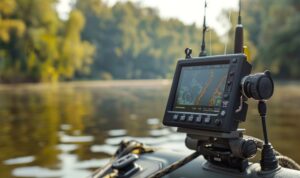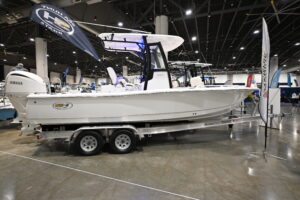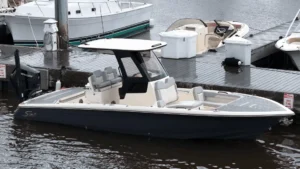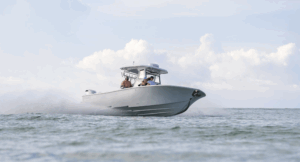Understanding Tides and Currents
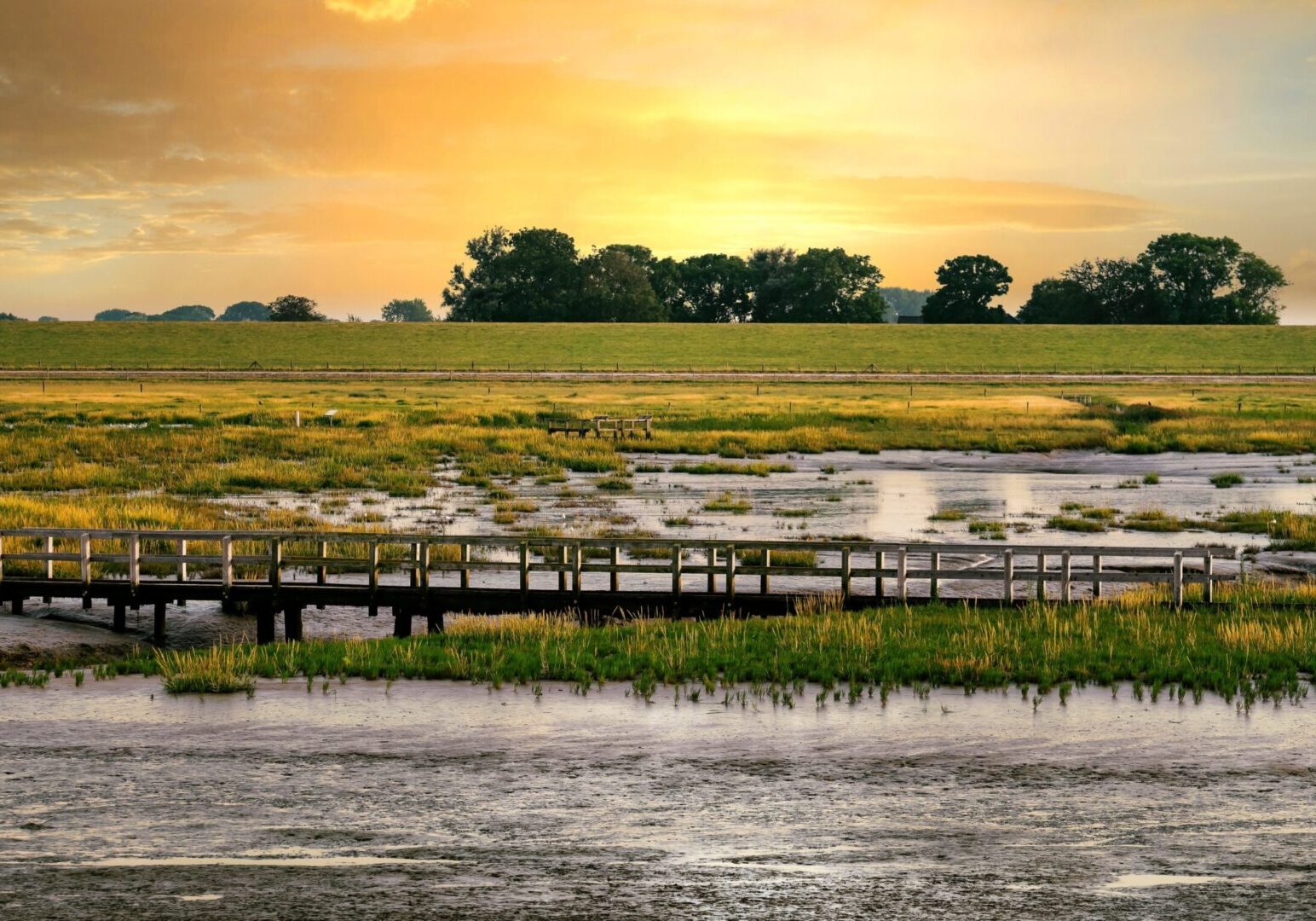
Why Tides and Currents Matter
If you spend any time on coastal waters, understanding tides and currents isn’t optional, it’s essential. These natural forces affect nearly every aspect of boating, from how your boat handles to where (and when) you can safely go. Misjudge the tide, and you might find yourself grounded in a skinny back bay. Underestimate a current, and docking becomes a stressful guessing game.
Even experienced boaters occasionally get caught off guard. Maybe you’re navigating an unfamiliar inlet and suddenly realize the outgoing tide is much stronger than you expected. Or you’re trying to anchor near a wreck, only to find your boat drifting off target because of a fast-running current.
Learning how tides and currents work doesn’t require a science degree. But gaining a solid understanding can mean the difference between a smooth trip and a frustrating or even dangerous situation on the water. In this guide, we’ll break it all down: what tides and currents actually are, how to read them, and most importantly, how to work with them instead of against them.
The Basics: What Are Tides and Currents?
At first glance, tides and currents might seem like the same thing; after all, they both involve moving water. But in practice, they’re two distinct forces, and understanding the difference is key to navigating safely and confidently.
Tides
Tides are the predictable rise and fall of sea level that happen each day due to the gravitational pull of the moon and the sun. Most coastal areas experience two high tides and two low tides every 24 hours, though local geography can influence that pattern.
The vertical movement caused by tides can raise or lower water levels by several feet or more depending on where you are. That matters a lot when you’re trying to clear a bridge, anchor in shallow water, or even get your boat on and off the trailer at a launch ramp.
Currents
Currents refer to the horizontal movement of water. These flows can be driven by many factors: tides, wind, river runoff, temperature, salinity differences, and large-scale oceanic circulation. In many coastal areas, the biggest factor is tidal movement, creating what’s called tidal current.
But not all currents are tied to the tide. For example, a river mouth may have a strong outgoing current even at high tide, and wind can create surface currents that work against or alongside the tide.
Why the Distinction Matters
A rising tide doesn’t always mean an incoming current and a falling tide doesn’t always mean water is flowing out to sea. Depending on the geography of a bay, sound, or inlet, there can be a delay between the tide change and the current switch (known as the “stand” or “lag” of the tide).
In short:
- Tides = Up and down
- Currents = Side to side (or in/out)
Knowing which one you’re dealing with and when can make a major difference in everything from fuel efficiency to your ability to hold position on a fishing spot.
Types of Tides: Know What You’re Dealing With
Not all tides are created equal. While they follow predictable patterns, the type, range, and timing of tides can vary widely depending on where you boat. Knowing what kind of tide you’re dealing with and when it’s happening can help you plan safer, smoother trips.
High Tide & Low Tide
These are the two most basic phases:
- High tide is when the water level is at its highest point.
- Low tide is when it reaches its lowest.
Most coastal areas experience semidiurnal tides, meaning two high tides and two low tides every 24 hours. In other places, like parts of the Gulf of Mexico, diurnal tides occur, where there’s only one high and one low tide each day.
Why this matters: You don’t want to find yourself stuck in a shallow creek at low tide or discover too late that a normally accessible sandbar is completely submerged at high tide.
Spring Tides vs. Neap Tides
These terms refer to how extreme the tide changes are over the course of a lunar month.
- Spring tides (also called King tides) happen during full and new moons. The sun and moon’s gravity combine to create higher highs and lower lows, meaning stronger tidal currents and more dramatic water level swings.
- Neap tides occur during the first and third quarters of the moon. The gravitational forces partially cancel out, leading to less tidal range, more moderate highs and lows, and typically weaker currents.
Even if you’ve memorized the local high and low tide times, failing to account for spring vs. neap tides could leave you surprised by how much water is (or isn’t) underneath you.
Tidal Range: How Much the Water Moves
Tidal range is the difference in height between high and low tide. In some areas, the range is just a foot or two. In others, like parts of the Bay of Fundy, it can exceed 40 feet.
Knowing your local tidal range helps with:
- Docking (will your dock be floating or left dry?)
- Bridge clearance
- Access to launch ramps
- Anchoring in changing depths
Location Matters
Tides aren’t uniform. They vary with:
- Coastal shape and bottom contours
- Distance from the equator
- Proximity to large rivers or bays
For example, tides in a narrow inlet may peak after the tide peaks outside the inlet due to water flow restriction, this is called a tidal lag.
Understanding the type of tide you’re dealing with helps you plan smarter and avoid common mistakes.
Understanding Tidal Currents
Tides move water up and down, but what you feel at the helm is the horizontal movement: tidal currents. These flows can vary in strength, direction, and timing and learning how they work will help you avoid trouble, especially around inlets, bridges, and tight channels.
Flood vs. Ebb Current
Tidal currents follow the rise and fall of the tide but with a bit of a delay:
- Flood current is when the tide is rising, and water is moving inland (from the ocean toward bays, estuaries, and rivers).
- Ebb current happens as the tide falls, and water flows seaward—back out.
These can be slow and barely noticeable in wide open areas or fast and forceful in constricted spots like inlets, causeways, or river mouths.
Slack Water: Your Best Friend
Slack water (or slack tide) is the brief period between flood and ebb when the current essentially stops. This typically occurs just after high or low tide, not right at it, timing varies depending on geography.
Why slack water matters:
- Safest time to run an inlet
- Best window for anchoring or retrieving gear
- Easier for beginners to dock or navigate narrow areas
Current Doesn’t Always Match the Tide
In many areas, the timing of current changes lags behind the tide table. For instance, the tide may be at its highest point, but water is still pushing in for another 30–60 minutes. This is especially true in long, narrow bays or rivers where it takes time for water to fill or drain.
A classic example: You launch at high tide thinking you’ll have slack current. But by the time you get to the inlet, it’s ripping at full flood because the current change hasn’t caught up yet.
How Fast Are Tidal Currents?
Current speed varies widely:
- In calm bays: <1 knot
- At open inlets: 2–4 knots is common
- In extreme locations like Deception Pass (WA): over 8 knots
Even a 2-knot current can throw off your GPS track, make docking tricky, or impact your trolling speed.
Reading the Flow
Look for:
- Water surface texture (ripples, boils, slicks)
- Floating debris or foam lines
- Your boat’s sideways drift when stopped
- Speed-over-ground vs. speed-through-water on your electronics
You can also use tide and current prediction apps or NOAA current charts to visualize flow direction and speed before heading out.
Wind, River, and Ocean Currents – Beyond the Tide
While tidal currents get most of the attention around coastal waters, they’re not the only forces that move water. Depending on where you’re boating, you might also be dealing with wind-driven surface currents, river flow, and larger oceanic currents. Sometimes, these act with the tide, other times, they push directly against it.
Knowing how these additional factors behave can help you avoid surprises and plan better routes.
Wind-Driven Currents
When wind blows across the water’s surface, it creates surface currents that can run independent of the tide. On large open bays or sounds, especially on shallow flats, a steady wind can set up a strong drift that may even override a weak tidal current.
What to watch for:
- Choppy surface + opposing current = rough water
- Strong wind with the tide = faster drift, harder control
- Wind against the tide = tight, steep waves and potential whitecaps
These effects are most noticeable on smaller boats, especially when trolling, drifting for fish, or trying to anchor in windy conditions.
River and Estuary Flow
In areas where rivers meet the sea, like tidal rivers, estuaries, or back bays, freshwater flow adds another layer to current behavior.
- Even at high tide, water may still flow outward due to river runoff.
- During heavy rains, river currents can become dominant, especially upstream from the saltwater influence.
This creates a complex mix where tidal currents may run one direction while surface water flows the opposite way, depending on depth and location.
Tip: If you’re boating a tidal river, check both tide tables and river flow forecasts (often provided by USGS or local authorities).
Ocean Currents
In deep offshore waters, oceanic currents like the Gulf Stream, California Current, or Loop Current come into play. These massive flows are generally stable but can affect:
- Fuel burn and efficiency on long runs
- Wave behavior, especially where they meet tidal flow
- Fishing, as many species congregate along current breaks
While less of a concern inshore, understanding the presence and direction of ocean currents becomes essential the farther offshore you go.
These non-tidal forces might not be as predictable as the tide chart, but they’re no less important.
Real-World Boating Scenarios – Tides and Currents in Action
Now that you’ve got the basics down, let’s walk through a few realistic examples of how tides and currents come into play. These situations highlight common challenges and how understanding water movement can keep you safer, more efficient, and less frustrated on the water.
Scenario 1: Running an Inlet at the Wrong Time
You plan to head offshore for a morning fishing trip and leave the dock just before high tide. By the time you reach the inlet, the tide is falling, but you didn’t realize it’s also spring tide week, and the ebb current is pushing 3+ knots.
As you push into the inlet, you’re met with standing waves and swirling water, because the outgoing tide is colliding with onshore wind and swell. Your speed drops, and it’s a white-knuckle ride through the narrow channel.
Lesson: Check tide tables, current predictions, and wind direction before planning your offshore run—especially in areas with strong tidal flow.
Scenario 2: Docking in a Crosscurrent
You’re returning to your marina at slack low tide, but a steady wind has created a surface current running across the slip. You try to line up the boat for a smooth entry, but the bow keeps getting pushed off course. You end up backing out and trying again—twice.
Lesson: Tides may be slack, but wind-driven surface currents can still impact control at low speeds. Use short bursts of throttle and approach into the current when possible.
Scenario 3: Planning a Shallow Water Trip
You’re headed out to explore a shallow bay that’s known for sandbars. You launch around mid-tide, rising, knowing that even if you misjudge depth, the water will be coming up, not dropping. You mark your entry points and time your trip to return before the next low tide.
Lesson: For areas with limited depth, always plan around the rising tide especially in unfamiliar waters.
Scenario 4: Anchoring Over Structure
You’re fishing a nearshore reef and try to anchor over a small wreck. But once you drop anchor, you realize the current is still ebbing hard, and your boat settles 30 feet off-target. You try again, but still can’t hold position.
Lesson: In strong currents, drop anchor up-current of your target, allowing the boat to drift back into position. Use slack tide or low-flow times for more precise anchoring.
These scenarios show how even experienced boaters have to account for more than just the tide clock. Paying attention to current speed, wind, and timing makes every trip smoother and safer.
Tools and Resources to Use
Understanding tides and currents starts with awareness, but it gets much easier when you have the right tools at your fingertips. Fortunately, there are plenty of resources—both digital and physical—that can help you plan and adjust on the fly.
Tide Tables & Current Charts
The classic solution. Printed tide tables and current charts are still widely used and available at:
- Local tackle shops
- Marina bulletin boards
- Government websites (like NOAA)
They show:
- Tide heights and times
- Current direction and strength
- Slack tide timing
These are especially useful in areas with complex waterways and inlets.
Tide & Current Apps
Smartphones have made it easier than ever to stay on top of water movement. Popular apps include:
- Tides Near Me
- FishWeather
- Navionics
- Windy
- Tide Alert (NOAA) – Tide Chart
These apps can show tides, moon phases, current strength, and even overlays on maps to help you plan ahead or course-correct in real time.
Chartplotters & Marine Electronics
Modern chartplotters from Garmin, Lowrance, Simrad, and others often include tide and current layers—some even show animated arrows representing flow direction and strength.
Use these features to:
- Visualize when a tide will flip
- Avoid anchoring in poor current
- Choose the best direction for trolling
Online Forecast Tools
Sites like:
These offer detailed local predictions and multi-day forecasts tailored to your region. Great for planning trips a few days out.
Handheld Observations
Even with all the tech, don’t underestimate your own senses:
- Watch debris movement
- Feel boat drift
- Check wind vs. current alignment
- Use landmarks to gauge position changes
Combining modern tools with old-school awareness is often the best approach, especially in unfamiliar or fast-changing waters.
Tides and currents might seem like background noise at first, but they’re some of the most important and powerful forces you’ll encounter on the water. Whether you’re cruising the coast, fishing a tidal creek, or just docking at your marina, knowing how water moves can help you avoid mistakes, stay safer, and make every trip more enjoyable.
You don’t need to become an expert overnight. Just start paying attention to tide tables, watching how your boat reacts to moving water, and using the tools available to you. Over time, reading the tides becomes second nature and it’s one of the most valuable skills any boater can learn.
Follow us on social media!
Search
Recent Posts
This content is restricted. Become a…
Bay boats have earned their reputation…
Bay boats have become some of…







